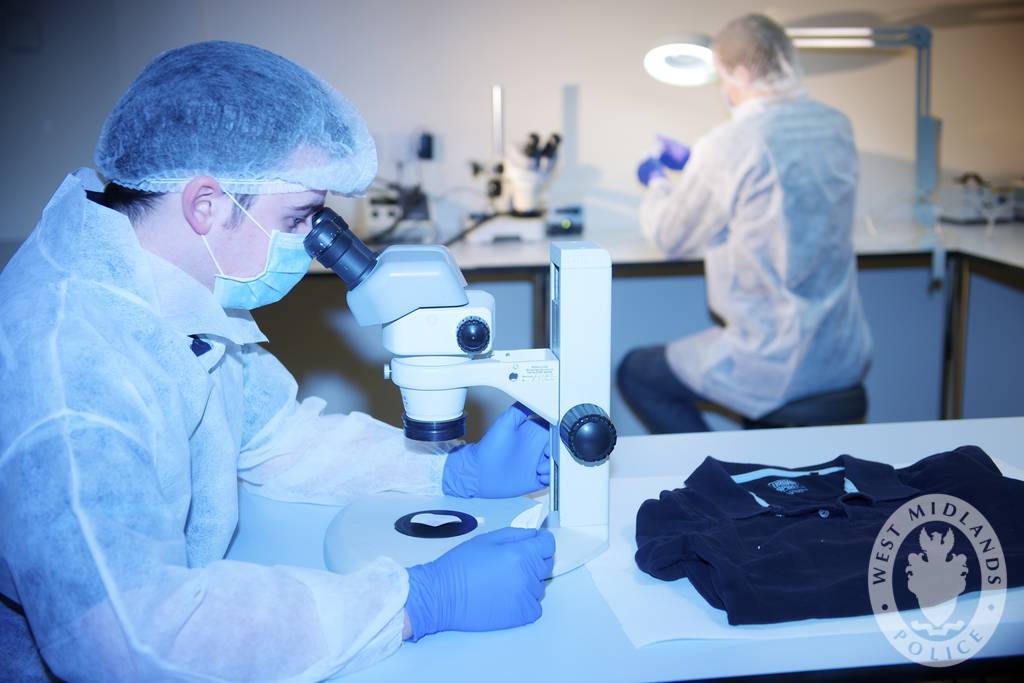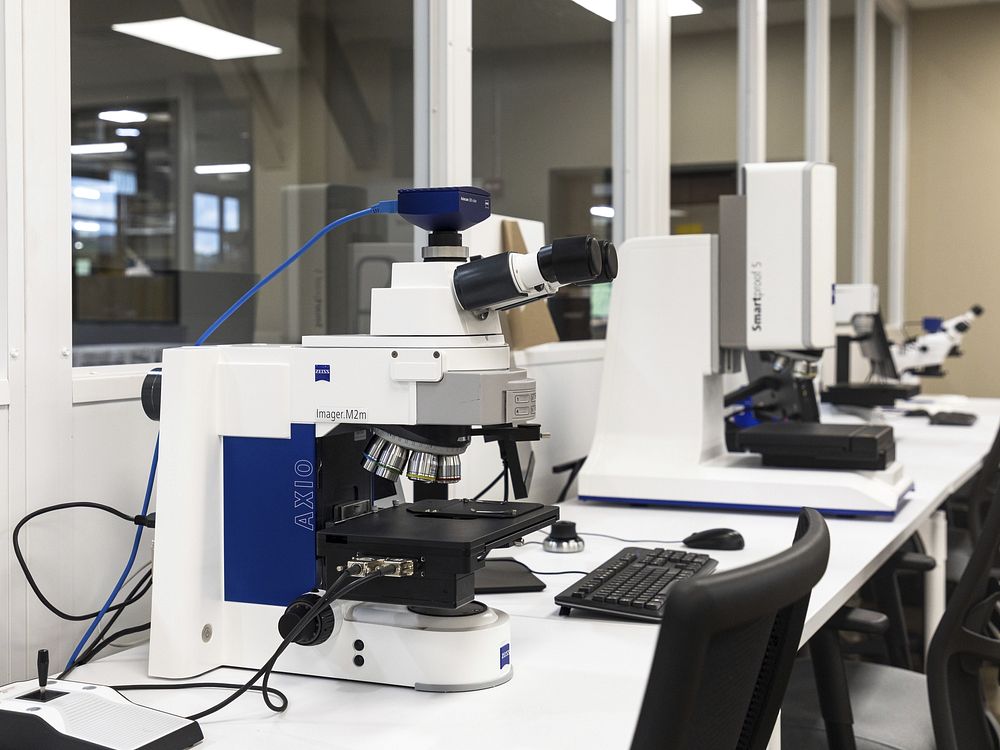Now Reading: Types of Genetic Markers and their applications for Investigation
-
01
Types of Genetic Markers and their applications for Investigation
Types of Genetic Markers and their applications for Investigation
GENETIC MARKERS: A genetic marker is a known DNA sequence located in the chromosome which is used for the identification of individuals among different species, and for the identification of other DNA sequences or genes. Genetic markers or the DNA markers located in the genome are used in the molecular genetics for the identification of polymorphism or DNA sequence from the unknown DNA sample. Genetic markers are widely used for the study of disease effected gene, to study polymorphism (any kind of alterations in the cell), for the identification of individuals, to identify different species or organisms. Genetic markers play a crucial role in genetic mapping, precisely to identify the positions of different alleles which are located on the same chromosome close to one another and that which tends to be inherited together. The technological advances in DNA sequencing have vastly contributed in the increase of the catalogue of variable sites in the human genome. RFLP (Restriction fragment length polymorphism), AFLP (Amplified fragment length polymorphism), RAPD (Rapid amplified polymorphic DNA), STR (Short tandem repeats), ISSR (Inter simple sequence repeat), SCAR (Sequence characterized amplified region), EST (Expressed sequence tag), SNP (Single nucleotide polymorphism), SSR (Simple sequence repeat) these are the multiple types of polymorphism that which serves as genetic markers. Insertions or deletions are another type of an example for a genetic marker.
RFLP: RESTRICTION FRAGMENT LENGTH POLYMORPHISM
RFLP is carried out by the restriction endonuclease enzymes. Restriction endonuclease enzyme cut at its specific restriction site in the DNA. Blotting which is now replaced by sequencing is used to identify the length of different fragments. The two variations in the RFLP method are the traditional blotting based probe hybridisation method and the new PCR based method, which is easy and rapid. The labelled DNA probes also known as RFLP probe is used to hybridise with the digested fragments by the southern blotting process. Here the polymorphism is detected by the analysis of hybridisation pattern of labelled probe via autoradiography. In the PCR process the gene of our requirement is amplified using the polymerase chain reaction. Here the results are analysed under agarose gel electrophoresis.
APPLICATIONS:
For the polymorphism study
Forensics- identification of the individual
For Paternity verification
For the hereditary disease diagnosis
For DNA finger printing and genome mapping.
AFLP: AMPLIFIED FRAGMENT LENGTH POLYMORPHISM
The method process the amplification of the selected DNA fragments followed by the digestion of the total genomic DNA of the selected organism.
The AFLP method follows:-
*DNA extraction
*Digestion of DNA with restriction endonuclease
*Adaptor ligation
*Pre amplification
*Selective amplification
*Gel electrophoresis.
APPLICATIONS:
AFLP method is highly applicable for crop improvement programmes
It is helpful for the genomic analysis of different types of crop varieties.
It is used in the phylogenetic studies for different plant varieties because of its high priming capacity of the primers.
RAPD: RANDOM AMPLIFICATION OF POLYMORPHIC DNA.
Part of the genomic DNA is randomly amplified using the short arbitrary DNA primers. It does not require any previous sequence information as the primer of 8 to 12 randomly amplifies the region of the genomic DNA. RAPD fragments are observed using ethidium bromide stained agarose gel or by polyacrylamide gel electrophoresis, it is seen between 0.2 to 5.0 kb.
APPLICATIONS:
For plant genetic research
For gene mapping
For species identification
For phylogenetic analysis
ISSR: INTER SIMPLE SEQUENCE REPEAT.
The ISSR method is based up on the PCR agarose gel electrophoresis which is detected using the single primer amplification reaction. Fragment of a sequence with 100 to 3000 base pair is called as the ISSR. Multiple loci can be amplified because of the random distribution of ISSR within the genome. The lower reproducibility and non-homology of similar sized fragments is a disadvantage of ISSR.
APPLICATIONS:
For the genetic diversity studies
For gene tagging
For Evolutionary study
For phylogenetic studies
STR: SHORT TANDEM REPEATS.
Short tandem repeats or simple sequence repeats are also called as the microsatellite. The STRs are 2 to 10 base pair long repeated about 10 to 50 times in a sequence. STRs are highly polymorphic and the number of repeats differs between individuals even though the loci are homologous. This makes the STRs as the first choice for forensic analysis. The principles of STR genotyping includes: 1) Individuals inherit two alleles for every STR locus, one from each parent. 2) For polymorphic STR loci, most individuals are heterozygous at most loci. 3) Same allele can be inherited from both the parents at any given locus.
APPLICATIONS:
STR is considered as an unmatched tool for forensic analysis and DNA testing
For Parental verification
It is used for the detection of maternal cell contamination during prenatal diagnosis
It is used in genetic linkage analysis
For genetic mapping
Good alternative for the identification of individuals
Used for migration history and evolution of the species
To learn about biological diversity, human evolutionary study through the molecular clock
About Genealogy study and Chimerism study.
SCAR: SEQUENCE CHARACTERISED AMPLIFIED REGION.
SCAR uses long primers with about 15 to 30 nucleotides and thus the reproducibility increases anonymously. It is locus specific co dominant marker. It is easy and reliable to use, it is highly reproducible. SCAR is based up on the PCR- agarose gel electrophoresis.
APPLICATION:
Used widely in plant marker assistance selection studies
EST: EXPRESSED SEQUENCE TAG
EST makers are the short stretch nucleotides of the expressed gene or the cDNA, this represents as a tag for the entire cDNA. The sequence tag is 500 base pair to 800 base pair sub sequence of the short stretch nucleotides. This tag is used in the study and identification of entire gene.
APPLICATIONS:
For gene expression, function and evolution
Valuable tool for gene discovery and plant metabolism analysis
SNP: SINGLE NUCLEOTIDE POLYMORPHISM.
Any alteration caused in a DNA results in the mutation as the genotype gets changed. Mutation can be the result of addition, deletion, inversion, duplication or translocation of a single nucleotide into the DNA sequence. Majority of SNPs occur in the non-coding region of the genome. The SNPs in the coding and non-coding regions are responsible for some of the inherited genetic disorders. SNP occurs at every 1000 nucleotides approximating up to 4-5 million SNPs in an individual’s genome.
APPLICATIONS:
One among the best genetic markers for genetic and genomic research
To find the disease probability and for the linkage disequilibrium studies
For the determination of disease, trait and association with the genetic variations
Used in the haplotype mapping
SNPs responsible for genetic diseases can be diagnosed
SSR: SIMPLE SEQUENCE REPEAT.
It is a microsatellite repetitive DNA marker which ranges from 5-50 times in a genome. It resembles to the short tandem repeats and it is a highly variable marker. This is based upon the polymerase chain reaction. It is co dominant and restriction digestion is not involved in the process, it give advantageous over the RFLP.
APPLICATION:
To measure genetic diversity of different lines of any species
To differentiate heterozygotic and homozygotic alleles between the lines from the same origin
APPLICATIONS OF GENETIC MARKERS:
Genetic markers are widely used for the identification, traits with respect to the disease or inherited abnormal conditions. For the identification of species, individuals and organisms. VNTRs and STRs are the primary choice for DNA fingerprinting, parental verification and maternal cell contamination. Widely used in population studies and genetic variation. Gene mapping and genetic screening are also done using genetic markers.
REFERENCES:
augustyn, adam. (2018, November 26). Genetic marker. https://www.britannica.com/science/genetic-marker.
chauhan, dr. tushar. (2019). An Introduction To Single Nucleotide Polymorphism (SNP). https://geneticeducation.co.in/an-introduction-to-single-nucleotide-polymorphism-snp/.
chauhan, dr. tushar. (2019). Short Tandem Repeats (STRs): A Secret of Every DNA Test. https://geneticeducation.co.in/short-tandem-repeats-strs-a-secret-of-every-dna-test/.
chauhan, dr. tushar. (2018). Different Type Of Genetic Markers. https://geneticeducation.co.in/different-type-of-genetic-markers/.
Kisiel, A. (2005). Expressed sequence tags and their application for plant research. https://link.springer.com/article/10.1007/s11738-005-0019-1.








